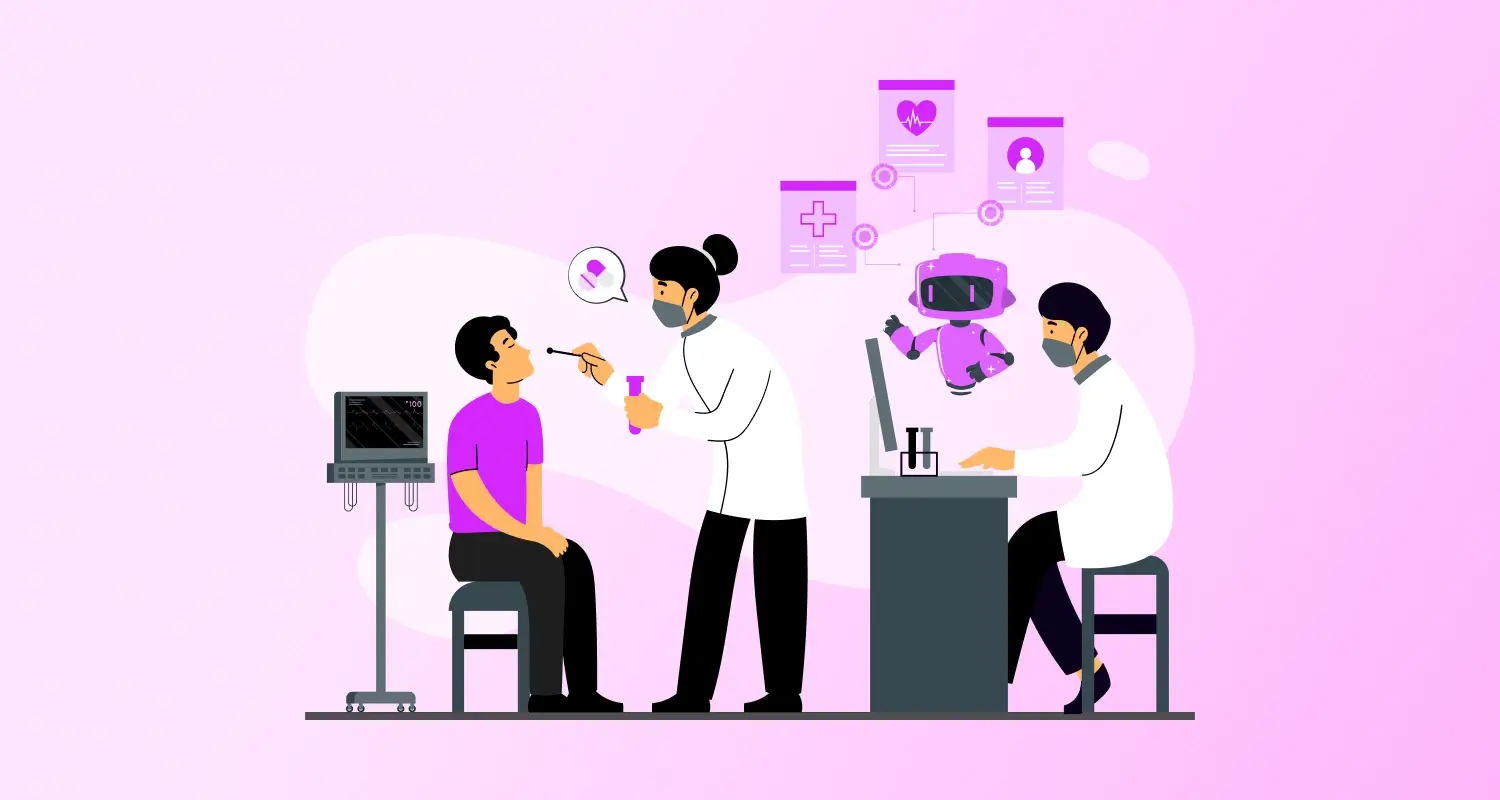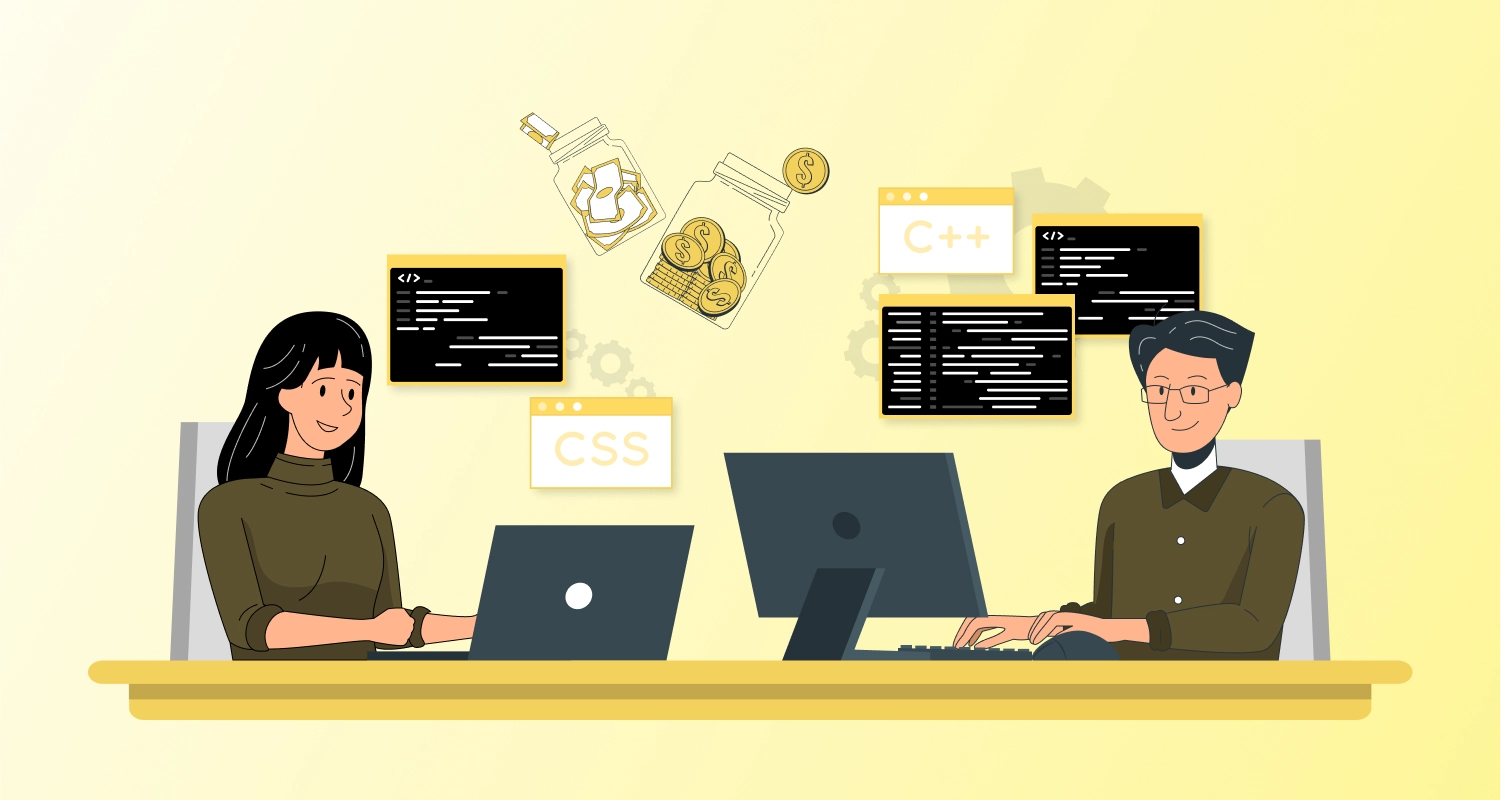Technology is moving at such a rapid pace every day. Nowadays, or rather today, as we live in the advanced digital world, most of the things can be done with a single click. But here we are served by millions of new technologies in so many ways. We need Virtual Reality or VR in easy terms in almost every field today. After the pandemic COVID-19, VR in medical training has gained significance.
Just by enabling a few realistic simulations, virtual reality healthcare training enables both healthcare professionals as well as students to practice various important medical procedures while ensuring a safe environment.
Moreover, VR can provide several innovative solutions that can be helpful in the treatment of different health issues. As per Statista, by the year 2029, VR in the market of healthcare will increase to more than 13 billion USD. This increasing rate of VR training in healthcare shows how useful this technique can be in the future. So, here we will discuss how VR medical training helps us these days.
VR in Medical Training: What Is It?
VR has been helping us for many years in various ways, and it is helping the healthcare sector. Today, medical training with VR is revolutionizing healthcare with its immersive tools. With these tools, medical professionals and students can easily perform many complex treatment procedures with ease. Moreover, it helps in the diagnosis procedure just by creating some detailed visualizations of patient data. Hence, professionals can diagnose the health issues of various patients with ease and treat them as soon as possible.
VR in Medical Training and Its Evolution
In the 1990s, VR was first introduced in the healthcare sector as rudimentary surgical simulations. It helped many surgical trainees to perform various surgery-related tasks in a virtual environment. However, several limitations reduced the usefulness of this technology. Some of those were poor graphics, bulky tools, etc.
However, over the last 30 years, technology has advanced with good pace and has offered some more immersive, interactive, and sophisticated VR experiences that are helping numerous healthcare professionals.
Moreover, software advancements also played quite an important role in this advancement. Today, you will see several new AR and VR trends, easy patient interactions, and even VR medical training software that can help numerous students to gain important hands-on experiences.
VR in Medical Training and Its Benefits
In the healthcare sector, VR has now become a very important element. It can offer different types of benefits. Some benefits of VR in medical training are as follows:

Real-time Feedback
Medical training with VR offers medical trainees real-time feedback. This helps them to find out what went wrong with their procedures. Thus, they can easily make some adjustments for their virtual patients as soon as possible. Thus, instant feedback can help a lot in learning some complex processes that may improve their soft as well as technical skills.
Moreover, it helps them to communicate with their patients with ease. Also, VR medical training and systems help professionals track various important performance metrics. Some of those are accuracy, speed, and even decision-making. This eventually helps them to perform thorough assessments and give personalized feedback.
Increased Retention
You will be surprised to know how virtual reality medical training can help professionals and students these days. According to a recent study, laparoscopic surgery training has proved that about 87% of participants enjoyed a higher rate of accuracy after the use of VR technology medical field.
As per Harvard Business Review, the use of VR in the medical field has improved the overall surgical performance of participants by almost 230% than in the past.
Improved Learning Experience
Though theoretical knowledge is vital, still experimental learning can help students in many ways. Virtual Reality can fall into this category and allows medical trainees to work on various realistic scenarios.
Just by performing several complex activities in a risk-free environment, VR can easily reduce the chances of mistakes in real-life cases. Also, VR in medical education can enhance the learning experience of medical students by closing the gap between theory and practical applications.

VR in Medical Training: Its Important Applications
Virtual reality in medicine and surgery can help in various ways. Several important applications are:
Physiology and Anatomy
Anatomy and Physiology are two important yet demanding aspects in the field of medical education. However, today, you will find various types of VR tools that can transform these procedures with ease. It can offer interactive 3D models and virtual dissections with which medical students can learn these subjects easily.
Students can know all the complex structures and systems of the human body with the help of digital representations and work effectively.
Surgical Training
With the help of Virtual Reality in medical education, practicing surgical procedures has become safer. The VR simulation tools offer students immersive learning experiences.
In this way, students can improve their skills and confidence and can offer stronger patient outcomes.
VR in Medical Therapy
In the field of medical therapies, VR can help in many ways. Some of those are as follows:
Treatment of Mental Ailment
Today, therapists use VR to create several useful mental health treatment procedures. Programs like Bravemind and Limbix can help patients take care of their various traumatic or anxious situations with ease. During the pandemic, VR trends even helped patients to take care of their psychological healthcare when they were following social distancing guidelines.
Physical Rehabilitation
VR can help patients who are recovering motor skills. It can offer a virtual environment full of interesting as well as interactive exercises that can easily improve the coordination and movement-related abilities of patients.
Limitations of VR in Healthcare
Though VR trends and technologies are helping numerous medical professionals, students, and even patients in many ways, these still have a few limitations.
Technical Issues
Software glitches, hardware malfunctions, etc. are the basic limitations of VR. These cause disruptions in the training and treatment procedures. It is thus necessary to work with a reliable Healthcare software development company.
Accessibility and Cost
VR software and equipment are quite expensive, and hence, this can be a limitation of VR in medical training. Advanced VR simulation software and headsets are quite costly; hence, many institutions cannot use these as much as they need. These limitations may prevent many healthcare institutions from using different VR programs.
So, it is crucial to get rid of these challenges of virtual reality in healthcare. To do this successfully, you may rely on a VR app development company that can offer you some budget-friendly yet efficient VR software.
VR in Healthcare and Its Future
The future of VR in healthcare is, no doubt, full of innovation and expectations, such as:
Expansion
Expanding the use of VR in medicine could become an important part of the training curriculums in the near future. In the United States, some institutions are already using a few pilot programs to find out the usefulness of VR in medical training.
For example, the pilot project of Stanford University is recently using VR to teach their students in Kenya about anatomy. Thus, many institutions are now working with companies that can work on various medical web application development procedures. Moreover, many organizations are now trying to create dialectical behavior therapy mobile apps to help healthcare professionals.
Integration with AI
Another fantastic way to increase the effectiveness of VR medical training is by integrating it with artificial intelligence for various purposes. AI technology can improve different types of VR programs to help medical students in several ways.
AI technology can improve those programs and increase their effectiveness to a great extent. Thus, VR in medical training, along with AI, can simulate complex scenarios to offer dynamic training experiences. Thus, many institutions are now working with a reliable healthcare software development company to train their students. Those companies can help with the procedures of medical device software development.
Conclusion
So, to conclude, we can say that this interactive and immersive quality of VR is helping the healthcare sector in different ways. VR Medical training can not only enhance the learning experience of medical students but also help them to treat their patients in a far better way than before.
Thus, nowadays, many business people are trying to build a medical tech startup to help many medical institutions. Just by working on the procedures of medical web application development, these start-ups can help many medical students and professionals in many ways.
Frequently Asked Questions
How Can I Use VR in Medical Training?
There are several different ways in which you can use VR in medical training. Some of those are helping patients to know and understand their conditions, helping surgeons to perform complex surgeries in a controlled and safe environment, helping patients deal with their anxiety and stress, etc.
Which Medical Fields Will See Improvements By Choosing VR?
The benefits of virtual reality in healthcare are noticed in various niches. Sections like medical education, pain management, rehabilitation, surgery, dentistry, etc. will surely see improvements.
What are the VR Technologies That Can be Used in the Healthcare Sector?
VR and AR are two vital technologies that are quite useful in the healthcare sector. They can help by offering interesting innovations like simulation systems, 3D visualizations, audio and visuals, etc.
How Can Professionals Use VR In Therapy?
Virtual reality or VR is now used in therapy in many ways. Some of those include social skills development, exposure therapy, treating mental health issues, etc.







